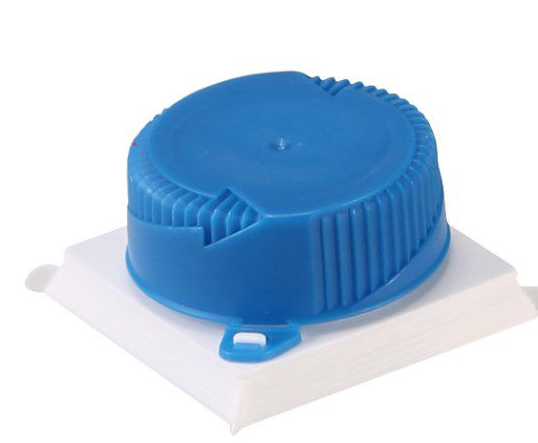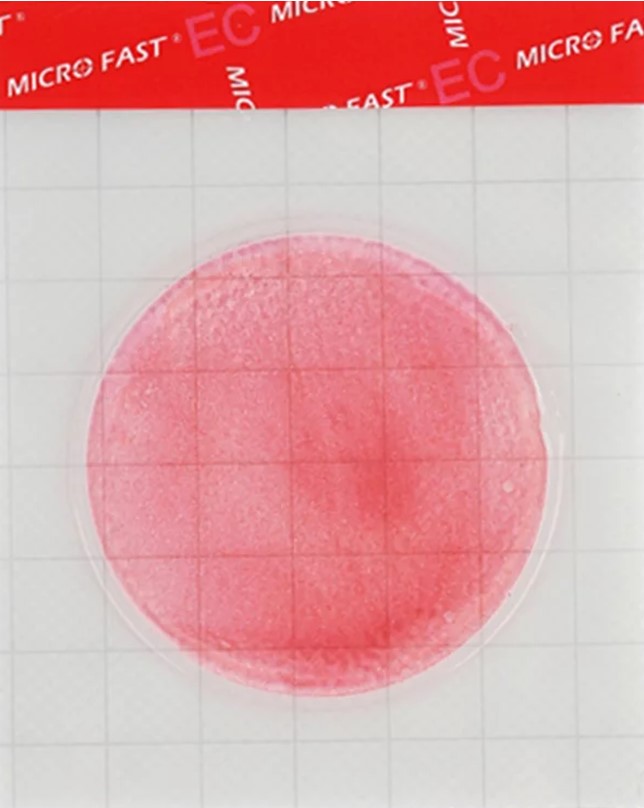Argentina's meat exports continue to decline

 PIONEER MEIZHENG BIO-TECH (5 in1) JC0871/ Rapid tests for the determination of the residual amount of β-lactams, tetracyclines, chloramphenicol, streptomycins, ceftiofur in milk, whey.
PIONEER MEIZHENG BIO-TECH (5 in1) JC0871/ Rapid tests for the determination of the residual amount of β-lactams, tetracyclines, chloramphenicol, streptomycins, ceftiofur in milk, whey. PIONEER MEIZHENG BIO-TECH (5 in1) JC0586 - Antibiotic tests 5 in 1 / Rapid tests for determining the residual amount of β-lactams, tetracyclines and cephalexin in milk, whey
PIONEER MEIZHENG BIO-TECH (5 in1) JC0586 - Antibiotic tests 5 in 1 / Rapid tests for determining the residual amount of β-lactams, tetracyclines and cephalexin in milk, whey
We must make every effort to find good news for Argentine beef exports. At present, the positive data indicate that in terms of prices, the average value per tonne of product shipped has increased the most year on year in the region, registering an increase of more than 30 percentage points compared to more moderate percentage points for other countries of origin. Rosgan emphasizes that this improvement in the achieved prices is observed in almost all the main destinations of Argentine beef.
The flip side of this good news is the trade volumes. Data released by INDEC indicate total overseas sales of 52.1 thousand tonnes of product weight last month, up 17% from the 44.5 thousand tonnes reported the previous month. However, compared to last year’s figures, April has yet to recover and is the fifth month in a row with lower sales figures in terms of trade volume.
Thus, in the first four months of the year, the total volume of shipments reached 195.7 thousand tons of products, which brought in about US $964 million in revenue. Compared with 260.9 thousand tons exported in the same period last year, these figures indicate a 25% drop in volume, but only a 2% drop in value.
Rosgan invites us to compare these figures with those of other countries in the region, which in the same international context have managed to increase their exports . In the case of Brazil, its beef exports increased by 12.8% in volume in the first four months of this year, reaching a total of 827.8 thousand tons of product. Uruguay maintained its exports at 126.3 thousand tons of product weight in the same period, slightly higher than the volume recorded the previous year. Paraguay, for its part, increased its foreign sales by almost 20%, reaching 115.9 thousand tons of exports.
In Argentina's case, its exposure to the Chinese market is the highest among countries in the region, as sales to this destination continue to account for almost 60% of total exports. The fact is that, compared to last year, the Asian giant purchased 40% less beef in these first four months of 2025.
Renowned cattle market analyst Ignacio Iriarte says domestic consumption is performing remarkably well, but he can't fully explain the collapse in exports, which is largely due to a sharp drop in Chinese purchases. "We can't continue to operate in this market at these prices ; the numbers don't add up. The beef business is an exceptional prospect internationally, but we're exporting less and less. Meanwhile, the United States is on the hooksteer prices are $8 and are a magnet for beef exporters around the world, although the cycle may be starting to change."
According to the General Administration of Customs (GACC), CHINA imported just over 890,000 tonnes of beef from all sources from January to April, down 11% from its purchases in the same period last year. That means, at least so far, the numbers don’t support the USDA’s forecast, which says China will maintain its purchase levels in 2025, up a full 2% from last year, potentially taking its annual purchases to over 3.8 million tonnes.
Rosgan says that to meet USDA's forecast, Chinese purchases would have to accelerate significantly over the next eight months of the year, maintaining an average volume of more than 250,000 tons per month, which is unlikely based on current trends.
While the low prices China paid until last year appear to be fading, current prices also do not reflect the current tight supply situation in the global balance, a situation that could even worsen in the coming years. Some warn that it is running out of suppliers.
Rosgan technicians point out that the recent Sial International Food Fair held in China did not fully live up to expectations. Although the agreed prices for our country's products are not bad, strong competition from Brazil and Australia, each of which is represented in different product segments, raises the bar too high for other competitors in a difficult to interpret demand environment.
It is worth remembering that the results of a safeguards investigation launched by the Chinese government last December, which includes Argentina as a supplier, are due to be known in the coming months. It is suspected that the impact will not go unnoticed by those selling beef across the Great Wall, whether in the form of tariffs or market access quotas. Australian sources believe their country risks paying a 12% tariff for increasing supplies.
Argentina's exports are on a worrying path so far. At the same time, since last October, our country has been increasing its beef imports , from virtually zero until this month to just over 1,600 tons in April 2025. Brazil is the main supplier, having accumulated about 3,400 tons this year. Paraguay and Uruguay, with smaller volumes, should also be added. It remains to be seen how this trend will develop, but if it continues, we should expect between 15,000 and 20,000 tons of beef. This is not much, but it is an indicator of the strengthening of the peso.
Meanwhile,REUTERS reports that our country is close to an agreement on exporting offal to China. Chinese authorities are expected to visit Argentina on June 8 for new rounds of talks. Both sides are working to finalize technical details.
Read together with it:
- A fire at the Merci Agro Sakhalin pig farm killed 1,500 pigs, but pork production will not be affected.Deputy Minister of Agriculture and Trade of the region Inna Pavlenko noted that other pig farms will help compensate for the loss. Merci Agro Sakhalin plans to restore its capacity and livestock, which will help avoid a pork shortage on the local market. The restoration will be funded by insurance payments, and veterinarians have already analyzed the condition of the remaining animals and determin...
- The IEA sees a risk of a decline in oil production in Russia due to sanctions.The IEA sees a risk of reduced oil production in RUSSIA due to US sanctions , but maintains its production forecast. According to the IEA, Russian oil exports will remain unchanged.There is a "significant downside risk" to Russia's oil production forecast due to US sanctions, the International Energy Agency (IEA) said in a report.BLOOMBERG . The agency's experts believe that the latest US sanction...
- UniCredit заявил о галактических усилиях из-за санкций против РоссииUniCredit старается не нарушить «более 15 тыс. санкций», а также не «совершать ошибки», которые позволят изъять его активы в России, заявил гендиректор. После начала военной операции банк начал рассматривать возможность ухода Итальянский банк UniCredit прилагает «галактические усилия», пытаясь соблюсти международные санкции в отношении своего российского подразделения. Об этом заявил генеральный д...
- "Коллективы АПК способны решать любые задачи даже в непростых условиях". Назаров о заслугах сельхозпроизводителейЮрий Назаров 13 ноября, Минск. Обеспечение продовольственной безопасности страны - большое достижение трудовых коллективов аграриев, отметил управляющий делами Президента Республики Беларусь Юрий Назаров на торжественной церемонии награждения государственными и иными наградами работников АПК Управления делами Президента Республики Беларусь, передает корреспондент БЕЛТА. Торжественная церемония наг...
- He crawled to the icon with prayer. The true story of a man who overcame drug addiction.Alexander Ovchinnikov. Topic News. Our project's hero was a drug addict for many years. The thought that this was a dead end never left him, but his addiction proved stronger. One day, when he could no longer walk, he crawled to an icon in prayer. This became his first step toward a new life. Today, he heads a charity center that helps those who have given up hope and are unable to quit ALCOHOL an...
- Sustainable growth of the food and processing industries in BashkortostanIlshat Fazrakhmanov, Deputy Prime Minister andThe regional Minister of Agriculture noted that the development of these industries provides the population with essential food products and contributes to increased exports. Since 2020, agricultural exports from the region have doubled. Since the beginning of 2......
- Низкое предложение и устойчивый спрос: в Аргентине растут цены на мясоЦены на говядину снова выросли, что отразилось на полках супермаркетов и в мясных магазинах. За последние две недели розничные цены выросли на 8–12%, а на некоторые популярные отрубы рост превысил 15% по сравнению с октябрем. Тем не менее, продажи остаются высокими: потребители продолжают покупать, принимая новые цены и закрепляя тенденцию, которая повторяется каждый год в конце года, когда спрос ...

























































